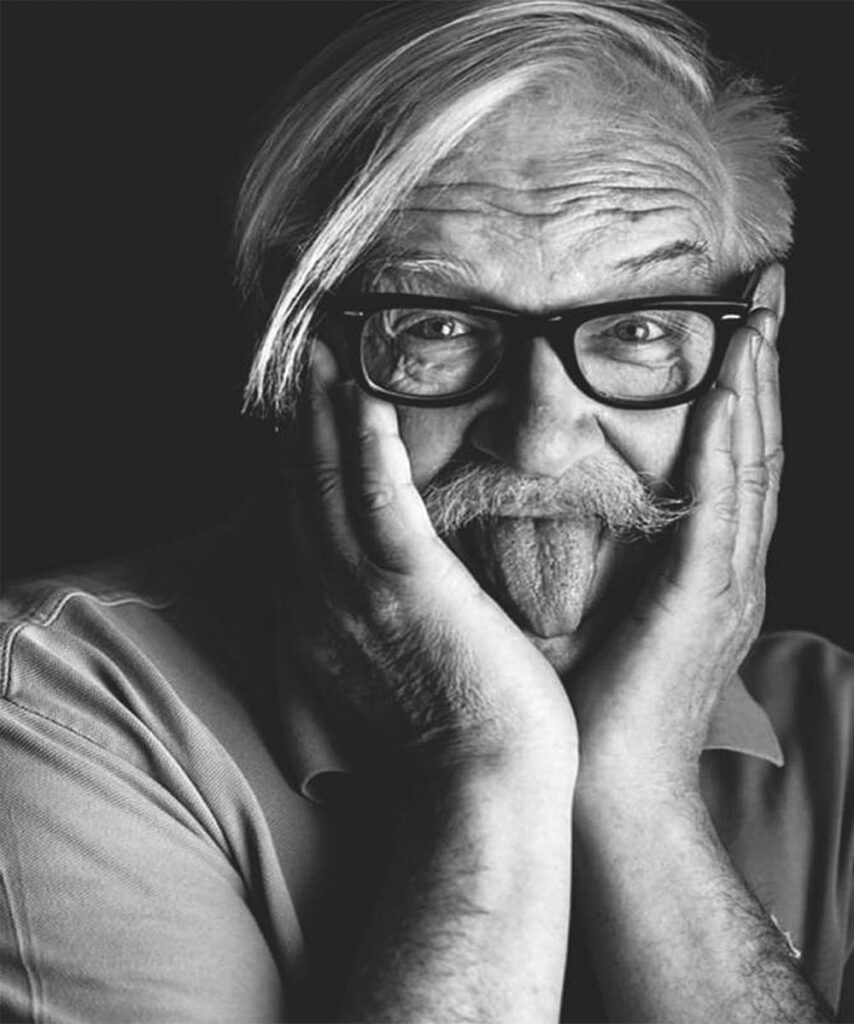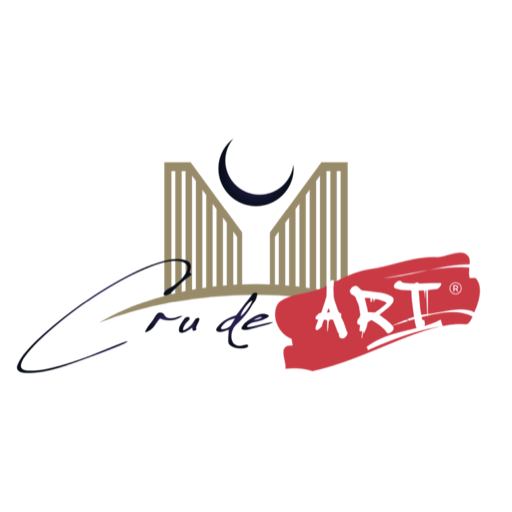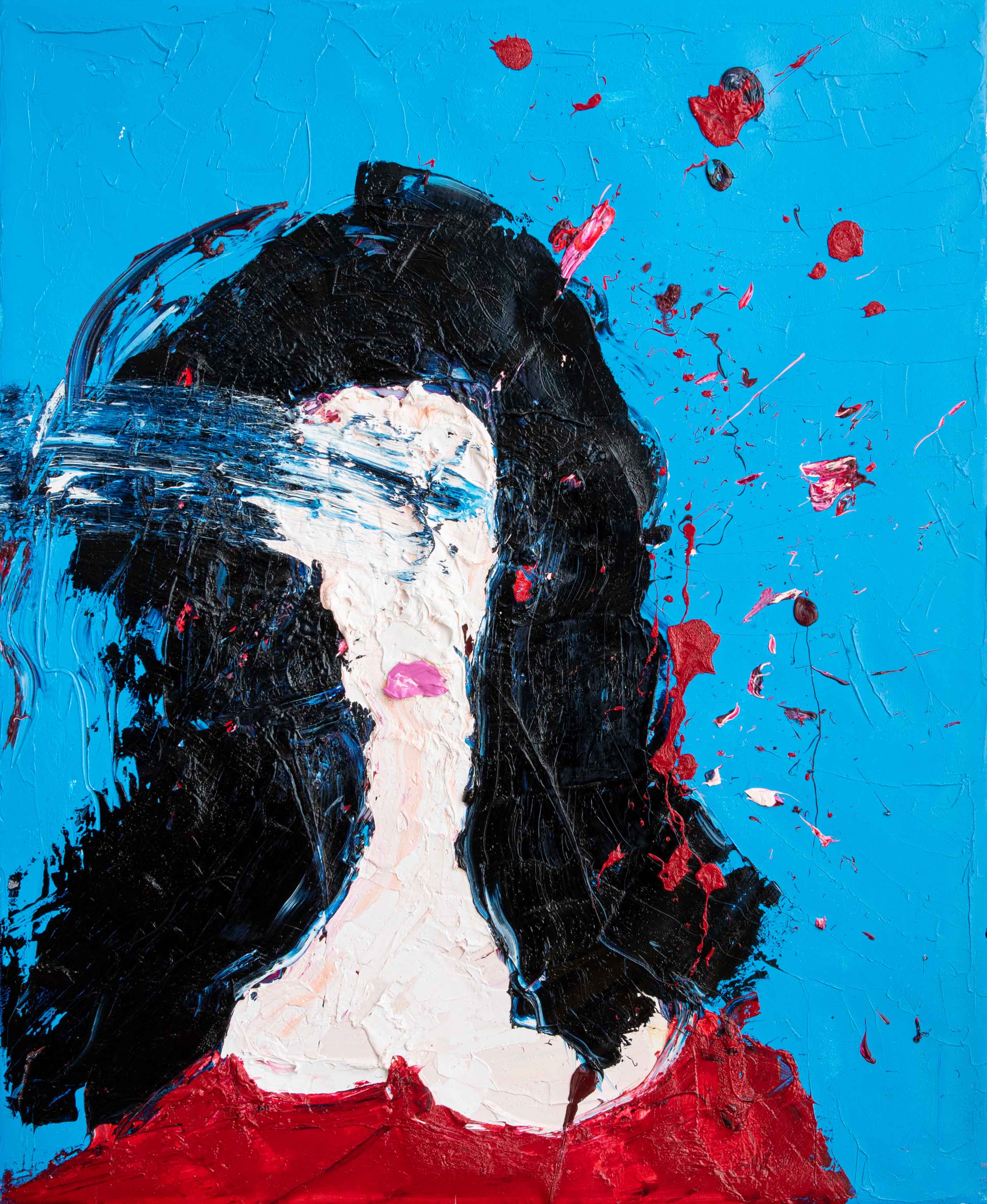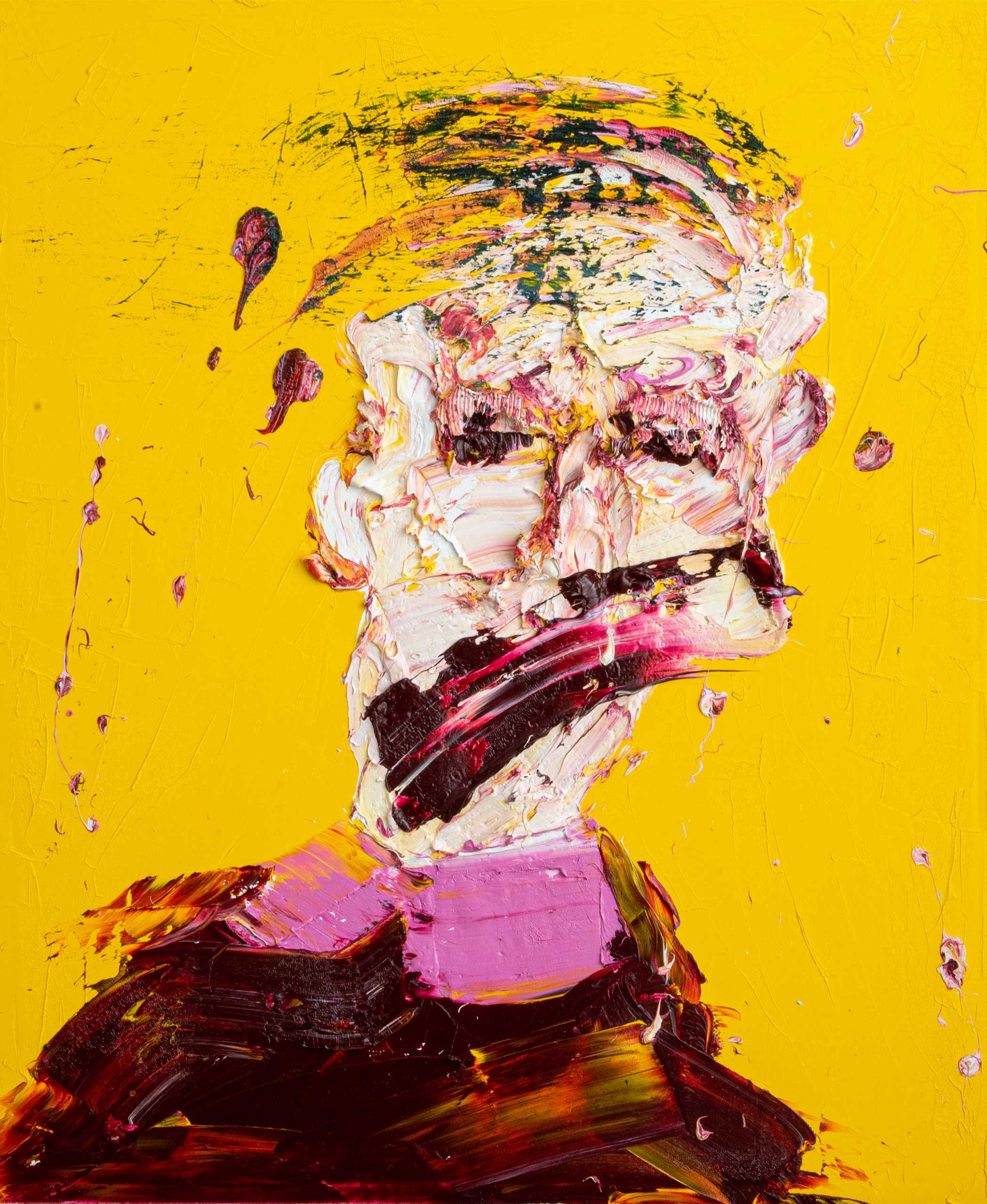The Artist
Giordano Floreancig
Giordano Floreancig was born on 25 October 1954, lives and works in Udine. Self-taught, he approaches painting in 1976: the year in which Friuli lived the tragic experience of the earthquake. But it was only in 2000 - and by chance - that he presented himself to the public: his daughter Valentina sent a painting without his knowledge to a national competition where he won first prize in the painting section. At the award ceremony, the artist declares: "I painted better in kindergarten". Subsequently, in the same year, he won another first prize in Castelfranco Veneto with this motivation from the art critic Pier Duilio Pizzolon: "Extreme artist in form and substance, in colour, in matter, in sentiment, in irony, in love denied transcendence but also denied in appearance, plundered and stripped of normality, immersed in the primitive archetype that has no dialogue but only monologue, however his iconicity full of deep unexpressed feelings, vibrates with strong tonifying messages capable of shaking the universe.His painting of total blacks, without light and its opacity, oozes incommunicability and gloomy silences, contrasted and very delicate flesh tones and tender".

After numerous other awards, his first exhibitions begin, mostly personal ones. His faces painted in very pregnant and vigorous oil, which express the tragedy of existence, through decisive and merciless brushstrokes for their raw truth. Objective reality becomes appearance for him, it is an explosive energy mixed with desperation that gives life to the most disturbing works. Known for the faces of madmen (which he considers the "last normal") the first personal exhibitions begin in the region, where he obtains an enormous success with the public - and with critics - and in a short time the institutions organize important exhibitions in Tarcento at Palazzo Frangipane , in Trieste at the Palazzo della Regione, in Rome in the headquarters of the Friuli Venezia Giulia Region, in Cividale in the church of Santa Maria dei Battuti and others. In his artistic career, Floreancig also turns towards the conceptual, creating installations and performances that still maintain a strong emotional impact. In 2009 he burned 147 oil paintings (Euthanasia 147 Art Work) packing the ashes in as many jars which earned him an invitation to Vittorio Sgarbi's 54th Venice Biennale where the artist burned another 150 paintings together with the Director of the Italian pavilion, always packing the ashes. He makes a great friendship with maestro Giorgio Celiberti, a neighbor of the studio, who appreciates and esteems Floreancig as he declares in an interview during one of his exhibitions and reported by a local newspaper: "I arrived at the exhibition after a trip in the rain and looking out onto the ex convent of San Francesco, I experienced a new and fascinating sensation full of emotions. An imaginary of new and unexpected faces that gave me a new, never experienced impact. This artist arouses in me a feeling of profound gratitude to art, also for how the exhibition was structured and how this space was reinvented. I think of everything that involved Giordano with his fervor, dynamism and continuous inventions, irreverent, full of love and everything! Never dull. I wish I didn't have the time to analyze, I would like to stay with the very important feeling that I have in my heart right now". Since 2015 he no longer exhibits in his region and exhibitions begin in Italy and abroad. His expressionist painting is thus described by Paolo Levi: “These contorted asphyxiated faces, coming from the desperate world of the pissed off by Giordano Floreancig, are surreal faces captured with chromatic and material concessions, now fat and opaque, now thin and translucent. With a touch of caustic Baconian irony, the artist cripples his portraits, making them deformed. In the shocking paintings that the artist presents to the amazed viewers, there are those cries about the injustices of the world and the tragedies of existence, testifying to the demonic nature of our time. The author certainly does not want to depict faces of reality but the expressive archetypes of the disturbing monstrosity of man, faced with the evils of contemporary society, a denunciation albeit impotent, through disfigured and dazed characters to whom the painter shouts enormous and strangled, to make us understand that it is useless to hide the ugliness of life, which instead must be reported". Lately he has been using a very material technique, as can be read in Vittorio Sgarbi's critique when attending one of his exhibitions: "The new faces of Giordano Floreancig, very material, deform the figure giving it that three-dimensionality that has a very strong expressive force. The painter paints a picture with colors that go where they want, but delimit the border of a face. It is a technique that during the twentieth century in England had its best interpreters with Bacon and Auerbach, that is, those artists who work on matter by deforming the face. While I was looking at them, I really thought that Floreancig may have been inspired by a current from the 80s and 90s of the twentieth century and that it has its own effectiveness: it looks like a formless painting and instead then defines forms. His works have their own strength and their own very original expressive charge. The prototype, if we can say so, comes from Van Gogh. In his faces we see the tragedy of existence. His works can be found in museums and in many private collections, including many personalities from the entertainment world.
Giordano Floreancig was born on 25 October 1954, lives and works in Udine. Self-taught, he approaches painting in 1976: the year in which Friuli lived the tragic experience of the earthquake. But it was only in 2000 - and by chance - that he presented himself to the public: his daughter Valentina sent a painting without his knowledge to a national competition where he won first prize in the painting section. At the award ceremony, the artist declares: "I painted better in kindergarten". Subsequently, in the same year, he won another first prize in Castelfranco Veneto with this motivation from the art critic Pier Duilio Pizzolon: "Extreme artist in form and substance, in colour, in matter, in sentiment, in irony, in love denied transcendence but also denied in appearance, plundered and stripped of normality, immersed in the primitive archetype that has no dialogue but only monologue, however his iconicity full of deep unexpressed feelings, vibrates with strong tonifying messages capable of shaking the universe.His painting of total blacks, without light and its opacity, oozes incommunicability and gloomy silences, contrasted and very delicate flesh tones and tender". After numerous other awards, his first exhibitions begin, mostly personal ones. His faces painted in very pregnant and vigorous oil, which express the tragedy of existence, through decisive and merciless brushstrokes for their raw truth. Objective reality becomes appearance for him, it is an explosive energy mixed with desperation that gives life to the most disturbing works. Known for the faces of madmen (which he considers the "last normal") the first personal exhibitions begin in the region, where he obtains an enormous success with the public - and with critics - and in a short time the institutions organize important exhibitions in Tarcento at Palazzo Frangipane , in Trieste at the Palazzo della Regione, in Rome in the headquarters of the Friuli Venezia Giulia Region, in Cividale in the church of Santa Maria dei Battuti and others. In his artistic career, Floreancig also turns towards the conceptual, creating installations and performances that still maintain a strong emotional impact. In 2009 he burned 147 oil paintings (Euthanasia 147 Art Work) packing the ashes in as many jars which earned him an invitation to Vittorio Sgarbi's 54th Venice Biennale where the artist burned another 150 paintings together with the Director of the Italian pavilion, always packing the ashes. He makes a great friendship with maestro Giorgio Celiberti, a neighbor of the studio, who appreciates and esteems Floreancig as he declares in an interview during one of his exhibitions and reported by a local newspaper: "I arrived at the exhibition after a trip in the rain and looking out onto the ex convent of San Francesco, I experienced a new and fascinating sensation full of emotions. An imaginary of new and unexpected faces that gave me a new, never experienced impact. This artist arouses in me a feeling of profound gratitude to art, also for how the exhibition was structured and how this space was reinvented. I think of everything that involved Giordano with his fervor, dynamism and continuous inventions, irreverent, full of love and everything! Never dull. I wish I didn't have the time to analyze, I would like to stay with the very important feeling that I have in my heart right now". Since 2015 he no longer exhibits in his region and exhibitions begin in Italy and abroad. His expressionist painting is thus described by Paolo Levi: “These contorted asphyxiated faces, coming from the desperate world of the pissed off by Giordano Floreancig, are surreal faces captured with chromatic and material concessions, now fat and opaque, now thin and translucent. With a touch of caustic Baconian irony, the artist cripples his portraits, making them deformed. In the shocking paintings that the artist presents to the amazed viewers, there are those cries about the injustices of the world and the tragedies of existence, testifying to the demonic nature of our time. The author certainly does not want to depict faces of reality but the expressive archetypes of the disturbing monstrosity of man, faced with the evils of contemporary society, a denunciation albeit impotent, through disfigured and dazed characters to whom the painter shouts enormous and strangled, to make us understand that it is useless to hide the ugliness of life, which instead must be reported". Lately he has been using a very material technique, as can be read in Vittorio Sgarbi's critique when attending one of his exhibitions: "The new faces of Giordano Floreancig, very material, deform the figure giving it that three-dimensionality that has a very strong expressive force. The painter paints a picture with colors that go where they want, but delimit the border of a face. It is a technique that during the twentieth century in England had its best interpreters with Bacon and Auerbach, that is, those artists who work on matter by deforming the face. While I was looking at them, I really thought that Floreancig may have been inspired by a current from the 80s and 90s of the twentieth century and that it has its own effectiveness: it looks like a formless painting and instead then defines forms. His works have their own strength and their own very original expressive charge. The prototype, if we can say so, comes from Van Gogh. In his faces we see the tragedy of existence. His works can be found in museums and in many private collections, including many personalities from the entertainment world.




